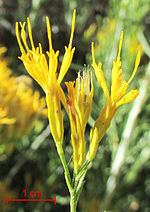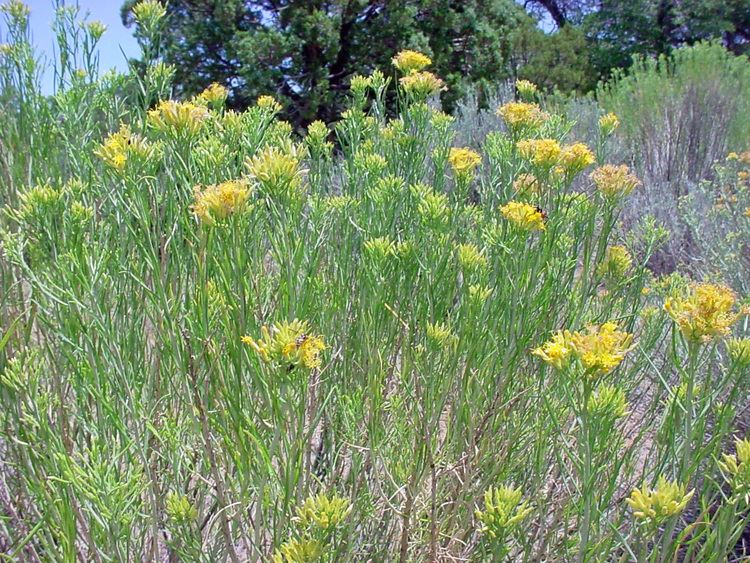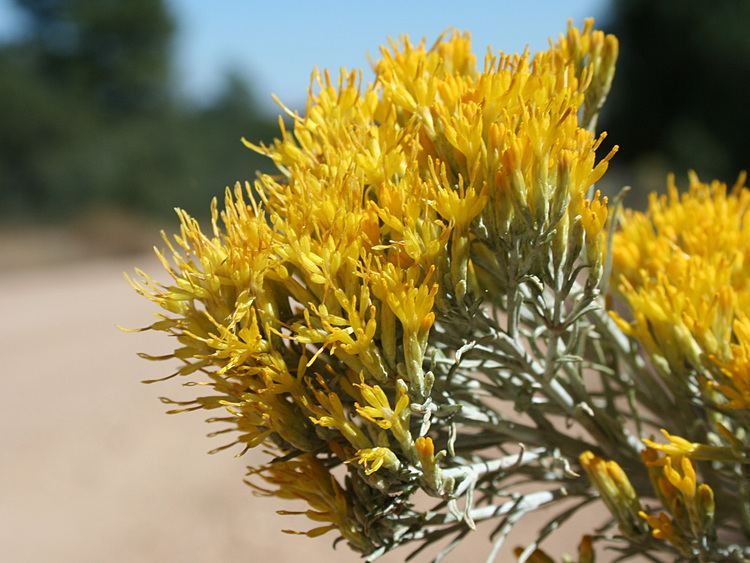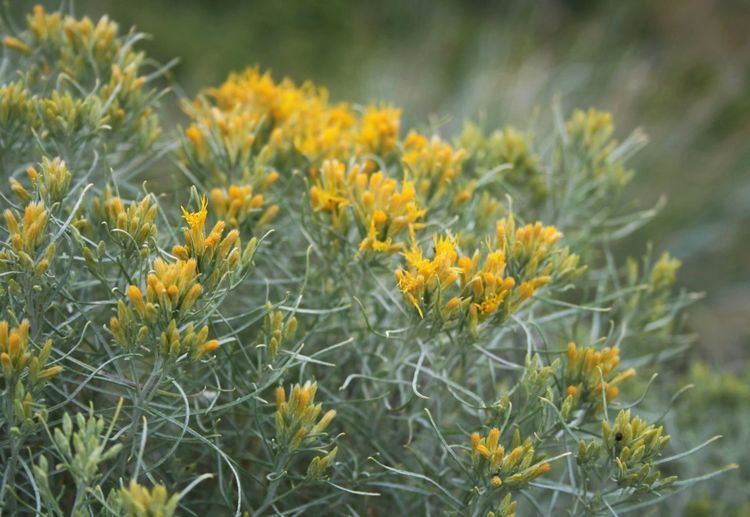Tribe Astereae Scientific name Ericameria nauseosa Rank Species | ||
 | ||
Similar Chrysothamnus, Ericameria, Chrysothamnus viscidiflorus, Sagebrush, Atriplex canescens | ||
Ericameria nauseosa (formerly Chrysothamnus nauseosus), commonly known as Chamisa, rubber rabbitbrush, and gray rabbitbrush, is a North American shrub in the sunflower family. It grows in the arid regions of western Canada, western United States (from the western Great Plains to the Pacific) and northern Mexico.
Contents
- Growth pattern
- Inflorescence
- Stems and Leaves
- Subspecies and varieties
- Cultivation
- Forage
- Uses
- Possible commercial uses
- Radioactivity
- References

Two subspecies have been described, nauseosa (the gray form with 14 varieties) and consimilis (the green form with 8 varieties).

Rubber rabbitbrush was moved from the genus Chrysothamnus to the genus Ericameria in a 1993 paper. The findings of a 2003 phylogenetic investigation of Ericameria were consistent with the move of the rubber rabbitbrush from Chrysothamnus to Ericameria. The second edition of the Jepson plant manual and the USDA Germplasm Resources Information Network have adopted the name Ericameria nauseosa.

Growth pattern
Ericameria nauseosa is a 2' to 8' perennial shrub. The shrub reproduces from seeds and root sprouts.
Inflorescence

It blooms from September to October. It produces pungent-smelling, golden-yellow flowers. Flower heads are made up of 5 small, yellow, tubular disk flowers flowers, and occur in umbrella-shaped terminal clusters.
Stems and Leaves
Leaves, depending on the subspecies, are long and narrow to spatula-shaped. Both the flexible (rubbery) stems and the leaves are greenish-gray with a soft felt-like covering.
Subspecies and varieties
Recognized infraspecific taxa from The Plant List with distribution information from Flora of North America and Tropicos

Cultivation
Rabbitbrush, Ericameria nauseosa, has gained popularity as an ornamental xeriscaping shrub in areas where water conservation is important. It thrives in a wide range of coarse, alkaline soils that are common to desert environments. Pruning the shrub back to several inches in early spring, before new growth begins, may help improve the shrub's ornamental value.
Forage
Along with associated species, like big sage and western wheat grass, rubber rabbitbrush is a significant source of food for browsing wildlife on winter ranges. Dense stands of this species often grow on poorly managed rangelands, in disturbed areas along roadways and on abandoned agricultural property.
Uses
The Zuni people use the blossoms bigelovii variety of the nauseosa subspecies to make a yellow dye. They use the stems to make baskets.
Possible commercial uses
Rubber rabbitbrush was considered as a source of rubber as early as 1904. Several studies have been conducted on the possible use of rubber rabbitbrush as a source of rubber including ones during World Wars I and II, and 1987. Currently the University of Nevada is conducting research on possible of uses of rubber rabbitbrush for biomaterial and bioenergy uses. One possible commercial use of rubber rabbitbrush would be as a source for hypoallergenic rubber for use in products designed for people with latex allergies.
Radioactivity
Specimens growing in Bayo Canyon, near Los Alamos, New Mexico, exhibit a concentration of radioactive strontium-90 300,000 times higher than a normal plant. Their roots reach into a closed nuclear waste treatment area, mistaking strontium for calcium due to its similar chemical properties. The radioactive shrubs are "indistinguishable from other shrubs without a Geiger counter."
